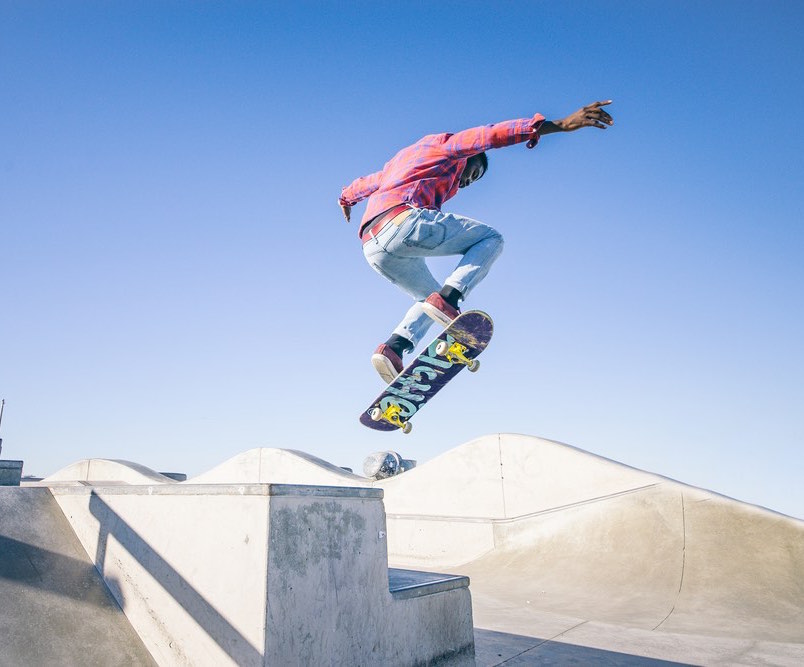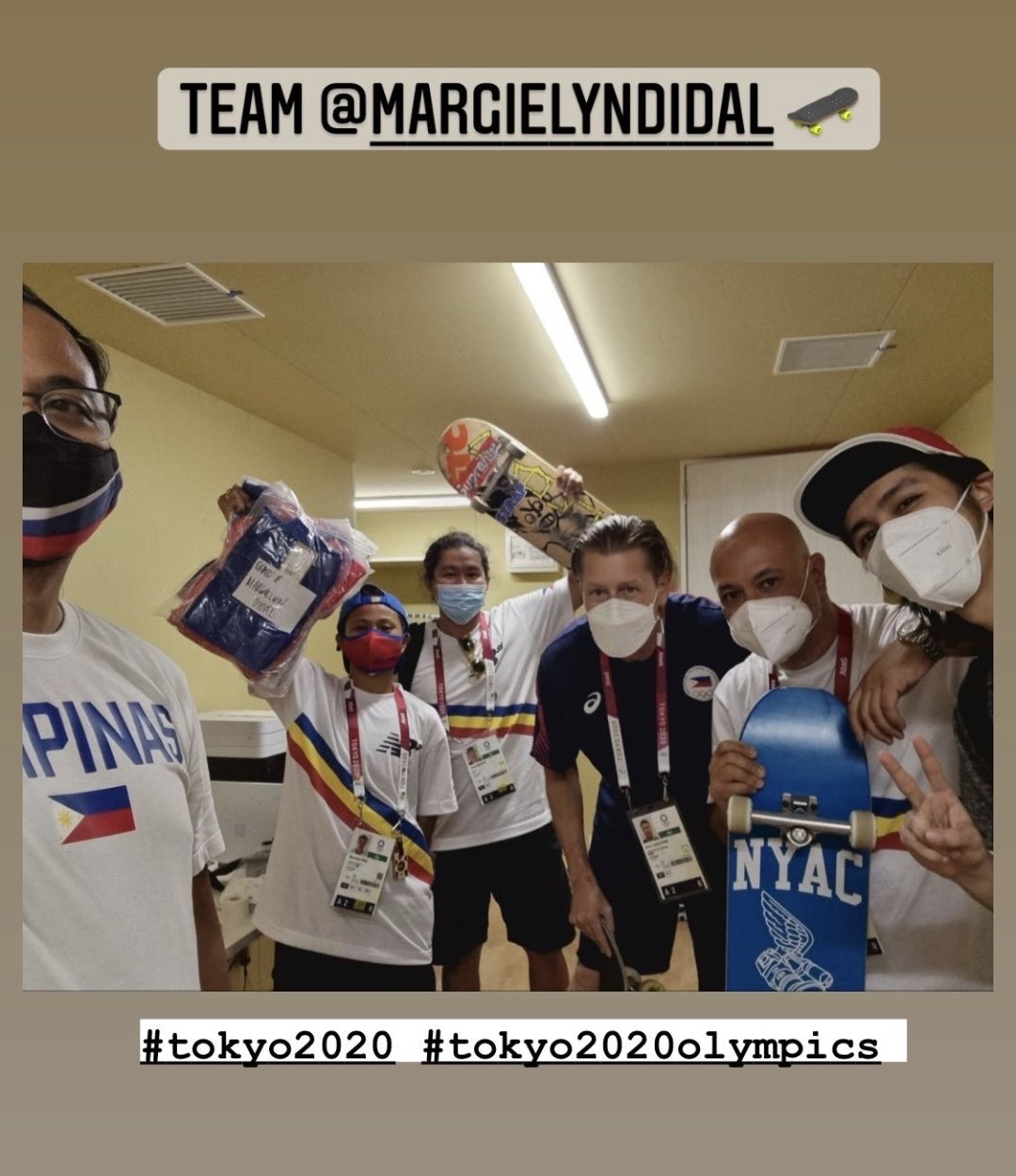EXPLAINER: Skateboarding at the Olympics, and Margielyn Didal’s gold chances
On June 25, the Philippines debuts on the Olympic skateboarding stage. The whole country is pinning its hopes on our flag bearer Margielyn Didal to be the first Southeast Asian to bring home the first gold medal in the very first skateboarding event in the Olympics.
Margielyn will challenge the world stage on July 25, day 3 of the Tokyo 2020 Olympics, against 19 other skaters from all over the world. She will compete in the Women’s Street category, one of the four medal events—Men’s Park, Women’s Park, Men’s Street, and Women’s Street—that skateboarding will debut with.

Because of Margielyn’s iconic gold at the 2018 Asian Games—which consequently led to the inaugural Philippine National Skateboarding Championship in 2019 and the recognition from the Philippine Olympic Committee and the Philippine Sports Commission—skateboarding has become “more legit” of a sport.
More than just rowdy kids in the streets playing with boards at night, skateboarders are now finally given an opportunity to pursue the sport competitively at the Olympic level.
Before becoming the Philippines’ skateboarding phenom, Margielyn Didal’s journey was hard, long and bumpy, but because of her determination to succeed, she became the icon of Philippine skateboarding, raising the bar to a higher level.
But while Margielyn has paved the way for all this, there’s still much we don’t understand about skateboarding—its roots in the country, how Margielyn can take home that gold at the Olympics, and what all this means for Philippine skateboarding moving forward.
To better understand this blossoming sport, PhilSTAR L!fe talks to Montecristo “Monty” Mendigoria, founding president of the Skateboarding and Roller Sports Association of the Philippines Inc., the governing body of skateboarding and all roller sports in the country.
Philippine skateboarding: How it started, how it’s going
“Skateboarding was first introduced in the Philippines in the late ‘70s because of the hype in the America where it originated,” said Monty. “Kids from that era started buying skateboards and played in their garage, in open spaces, and parking spaces.”

Throughout the ‘80s and well into the ‘90s, skateboarding began to rise in popularity as skating bowls began to pop up. When the Bones Brigade, a new breed of skateboarders skating almost everywhere—stairs, rails, ledges—was born, street skating began to flourish.
In a country with all eyes on basketball, skate parks and bowls were not as widespread. Skateboarders really had to make do with what they have in their neighborhoods. This is why Skateboarding’s origin and core has always been in the streets—which may have also influenced the way most people saw skateboarders.

Former Skateboarding and Roller Sports Association of the Philippines Inc. president Monty Mendigoria with Margielyn Didal. Photo courtesy of Monty Mendigoria)
“People look at the physical appearance of these skaters—they’re dressed in street clothes, they’re always sweaty because they skate in a hot outdoor environment—and tag them as outcasts or notorious. Often times, they are misunderstood. It’s true that some may get a bit confrontational towards authorities because they want to prove something, they want to be accepted. But honestly, most of the time, it’s because they’re being shoved away and left with no place to skate,” says Monty.
For many sports like roller skating, skateboarding, and figure skating, the lack of proper facilities has always hindered the growth of the sport competitively. But despite this handicap, we have been able to produce Olympians in such sports like figure skating’s Michael Martinez and skateboarding’s Margielyn.
Monty wonders, “What more if the government and the private sector provided the necessary facilities for Filipino skaters? We will be developing more Margielyn Didals in the future.”
Skateboarding at the Olympics
Skateboarding has been around since the 1940s, and after decades of skateboarding culture and competitive events, the sport was finally inducted into the Olympics at the 129th IOC Session in Rio de Janeiro, Brazil in August 2016.

The sport will have 80 quota spots spread out over four medal events, with 20 competitors for each medal. Athletes from all over the world were able to qualify by earning points from national championships, continental championships, world championships, 5-star events, and pro tour events.
Currently, the US, Brazil, and Japan are the strongest countries going into the Tokyo Olympics, with all of them claiming the three max slots per country per medal event.
Margielyn’s chances at the Olympics
While household names like Nyjah Huston from the United States, and young sensations like Sky Brown and Kokona Hiraki are big crowd-drawers, Margielyn Didal is a strong dark horse entering into the Tokyo Olympics.
True to the street nature of Philippine skateboarding, she will compete in the Women’s Street Category, which will be held in a setup aimed to resemble street skating. This means typical street skating obstacles like stairs, rails, and ledges are spread throughout the Olympics skate park, and will be available for the athlete’s use during his or her run.
After the Tokyo Olympics, skate facilities and programs will start growing in different parts of the country because of Margielyn’s impact on the youth—and the sport.
For Street Skating, Margielyn will compete against 20 skaters during the preliminary round, where they will have a go at two 45-second runs and 5 tricks. Five judges will score the skater’s performance from 0-10, based on their speed, the difficulty of tricks, originality, timing, and stability. Two of the lowest scores will then be dropped and the 3 remaining scores will be averaged. The skater’s highest run or trick scores will then be added to final score.
After the preliminary round, the top 8 will then move to the final round where they will again complete the same two runs and trick attempts to determine who will climb up the Olympic podium.
How Margielyn is shaping up the local skateboarding landscape
Currently, Margielyn ranks 17th in the Olympic World Skateboarding Ranking—but if there’s something Olympic history has taught us, it’s that a lot of things can and will influence an athlete’s performance during the day of the event.
In fact, during a virtual media roundtable by Red Bull with Margielyn in June, Margielyn shared that she was confident she would surprise everyone at the event. “I have my own tricks—bag of tricks—that they don’t have, so that’s why we’re training for 3 weeks before the Olympics,” she said.

“Her journey was never a bed of roses,” says Monty about Margielyn’s athlete journey. “Before becoming the Philippines’ skateboarding phenom, her journey was hard, long, and bumpy but because of her determination to succeed, she made it. She became the icon of Philippine skateboarding, raising the bar of Philippine Skateboarding to a higher level.”
Although a gold is the dream, Monty believes that Margielyn’s bid at the Tokyo 2020 Olympics in itself is already changing the landscape Philippine skateboarding for the better.
“Gold or no gold, the sport of skateboarding will definitely be tagged as the sport of the new generation. Expect many people, especially the younger ones, to be more involved in the sport of skateboarding. After the Tokyo Olympics, skate facilities and programs will start growing in different parts of the country because of Margielyn’s impact on the youth—and the sport.”

When Monty started the Skateboarding and Roller Sports Association of the Philippines Inc. with his skateboarding friends, all they wanted was to bring skateboarding to the limelight, in the same way that the Filipino people loved basketball as a sport and looked up to its athletes. He said, “The mission was to discover and develop skateboarding and roller sports athletes into becoming world class that would eventually bring honor to the Philippines.”
And now, that mission has become a reality, thanks to the strong and vibrant skateboarding culture in the country, the efforts of people like Monty who poured their heart and passion into the sport, and to the talent of skaters like Margielyn who held the torch high for all her fellow Filipino skateboarders whose dreams she carried into the biggest sporting stage in the world.
Banner photo by @dcatbautista from Margielyn Didal’s Facebook page


